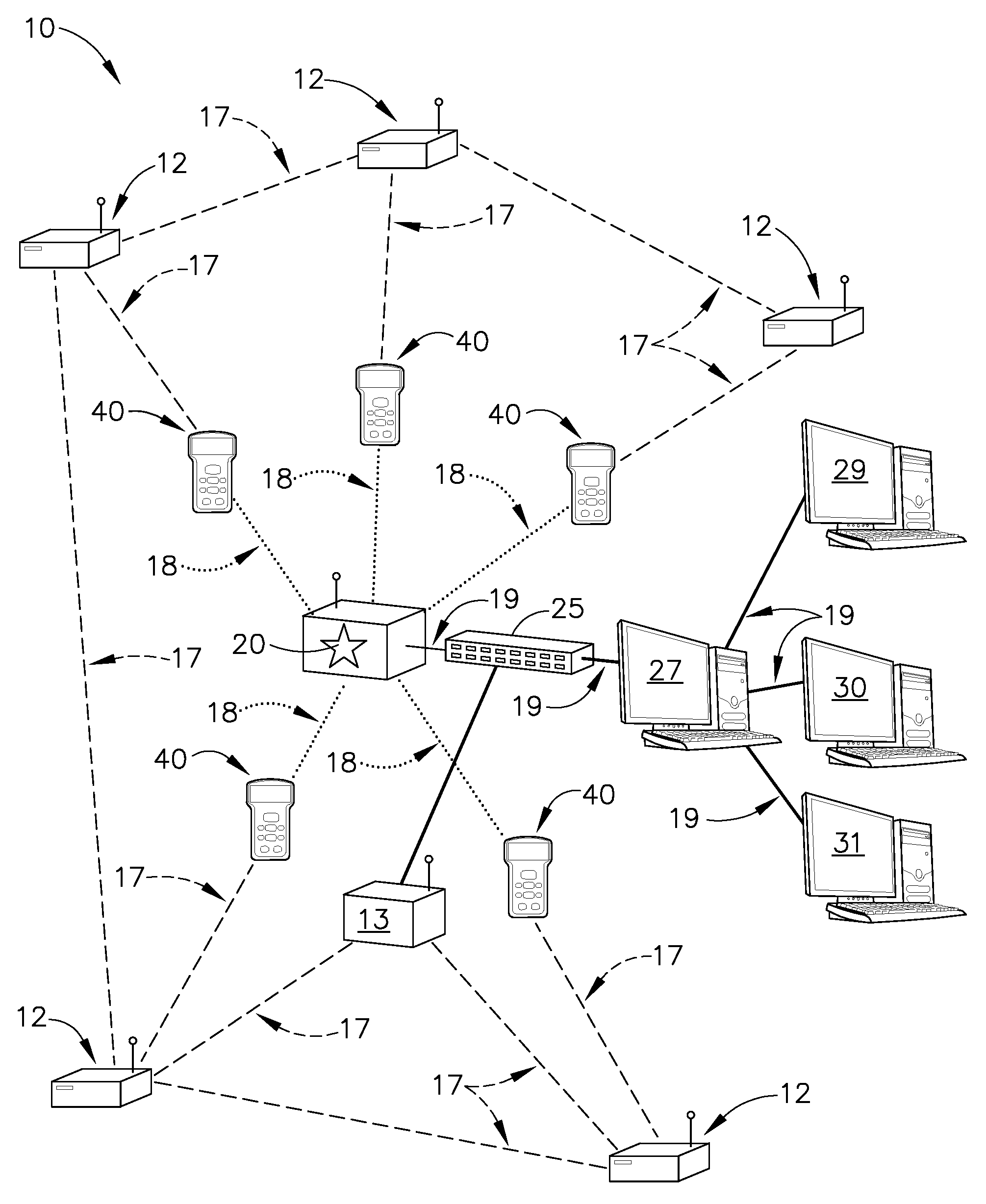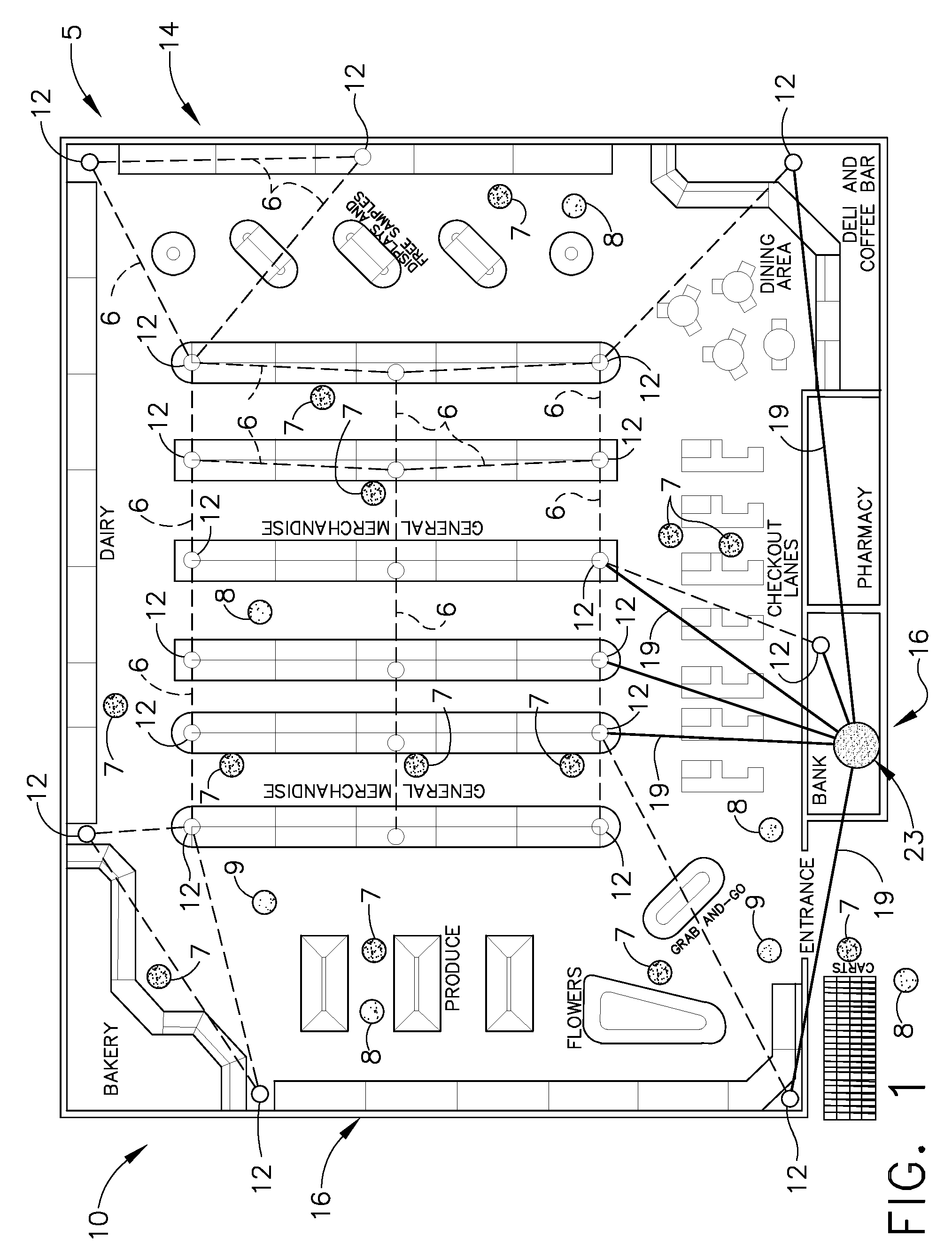System for shopping in a store
a shopping system and store technology, applied in the field of shopping systems for shoppers, can solve the problems of high labor intensity, affecting store profits, and difficult to maintain and/or replace, and many of these attempts have been highly complex, labor-intensive, and labor-intensiv
- Summary
- Abstract
- Description
- Claims
- Application Information
AI Technical Summary
Benefits of technology
Problems solved by technology
Method used
Image
Examples
Embodiment Construction
[0030]By the term “store” it is meant herein all manner of retail environments in which the purchase of goods occurs and in which shoppers are physically present in a store to purchase such goods including, but not limited to store types like grocery stores, convenience stores, clothing stores, consumer goods stores, specialty stores, manufacturing facilities, warehouses, and many other retail store types.
[0031]By the term “grocery store” it is meant herein the kind of store in which all manner of food, produce, floral products, pharmaceutical products, and traditional grocery products and / or services are offered within a shopping venue.
[0032]By the term “multi-network” it is meant herein a communications network in a store comprising two or more dissimilar types of communication network types, two or more similar types of communication networks or some combination thereof.
[0033]By the term “store based multi-network” it is meant herein that most, if not all, of the necessary wirele...
PUM
 Login to View More
Login to View More Abstract
Description
Claims
Application Information
 Login to View More
Login to View More - R&D
- Intellectual Property
- Life Sciences
- Materials
- Tech Scout
- Unparalleled Data Quality
- Higher Quality Content
- 60% Fewer Hallucinations
Browse by: Latest US Patents, China's latest patents, Technical Efficacy Thesaurus, Application Domain, Technology Topic, Popular Technical Reports.
© 2025 PatSnap. All rights reserved.Legal|Privacy policy|Modern Slavery Act Transparency Statement|Sitemap|About US| Contact US: help@patsnap.com



